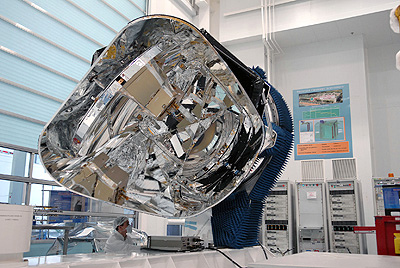Astronomers from the University of Virginia and other institutions have found that Enceladus, the sixth-largest moon of Saturn, is a “cosmic graffiti artist,” pelting the surfaces of at least 11 other moons of Saturn with ice particles sprayed from its spewing surface geysers. This ice sandblasts the other moons, creating a reflective surface that makes them among the brightest bodies in the solar system (Enceladus, itself a ball of mostly ice, is the single most reflective body in our solar system).
Heavens
Supernovae stand out in the sky like cosmic lighthouses. Scientists at the Max Planck Institute for Astrophysics and at the National Astronomical Institute of Italy have now found a way to use these cosmic beacons to measure distances in space more accurately. The researchers have been able to show that all supernovae of a certain type explode with the same mass and the same energy - the brightness depends only on how much nickel the supernova contains. This knowledge has allowed the researchers to calibrate the brightness of supernovae with greater precision.
A giant elliptical galaxy seen in an image from the Hubble Space Telescope is the closest gravitational lens yet known, according to information released by the Hubble Heritage Project Tuesday (Feb. 6).
ESA’s Planck satellite, due to study relic radiation from the Big Bang, is on display for the media tomorrow in Cannes.  Credits: ESA-S. Corvaja
Credits: ESA-S. Corvaja
Planck will make the most accurate maps yet of the microwave background radiation that fills space. It will be sensitive to temperature variations of a few millionths of a degree and will map the full sky in nine wavelengths.